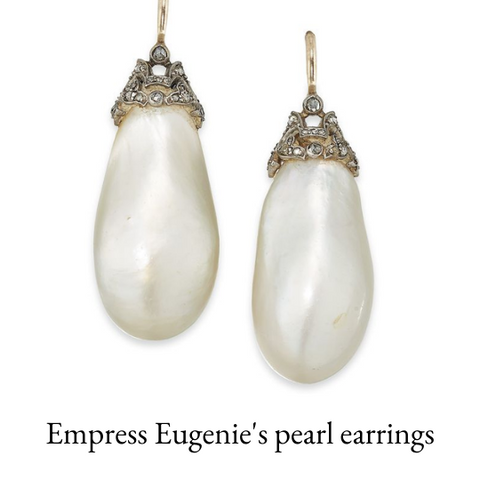Pearls have been used to make jewelry for ages. Literally. There is a fragment of a piece of pearl jewelry found in the sarcophagus of a Persian princess that dates back to 420 BC on display in the Louvre.
So... how to tell real pearls from fake pearls.
First of all, it's a little more complicated than just "real vs fake." Natural pearls are formed when an irritant becomes lodged inside an oyster's shell, which causes the oyster to secrete a crystalline substance called nacre. The nacre builds up in layers around the irritant until a pearl is formed.
100% natural pearls are RARE. I mean like SUPER RARE. Divers used to harvest literally tons of oysters and only find 3 or 4 pearls. Jewelry made with natural pearls is hella expensive... a pair of natural pearl earrings that belonged to Empress Eugenie of France (wife of Napoleon Bonaparte) sold for $3.3 million dollars!

In order to meet the high demand for pearls, a process of farming them was invented in the late 1800's. Cultured pearls are created by manually introducing an irritant into an oyster, therefore forcing the creation of a pearl. Pearls can be cultivated in freshwater or saltwater, with the different types of water resulting in different shapes and textures of pearls. Freshwater pearls are far more common and therefore less expensive than their saltwater counterparts. (Freshwater pearls are what I use in my jewelry designs)
So cultured pearls are REAL, but not NATURAL.

The process of cultivating pearls has evolved to include creating a variety of pearl shapes. The "coin" pearl is one of the most popular cultivated shapes and is created by inserting a flat, round disc into the oyster. Other shapes include squares, stars, sticks, and more!
And colored pearls? Those are real too! They're cultivated pearls that have been soaked in dye.
I love using pearls in my jewelry, both as small accents and larger focal beads. My favorite shapes are coin pearls and stick pearls, so I use those a lot!
